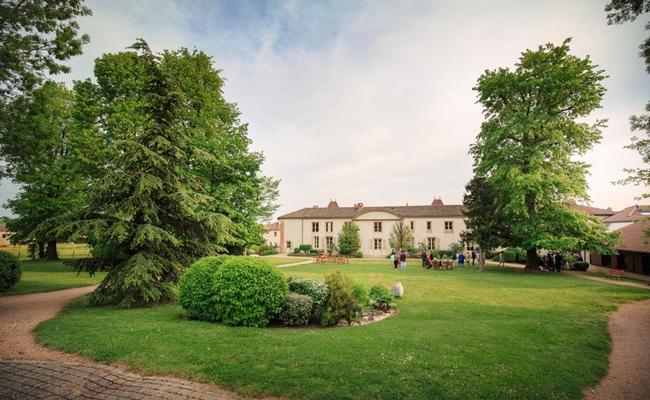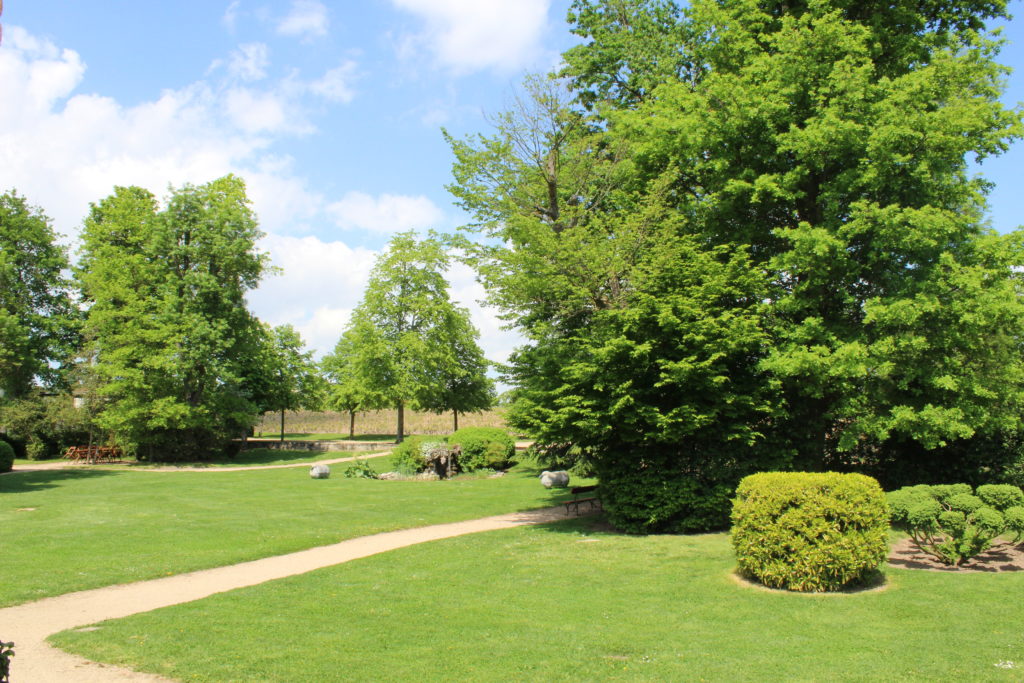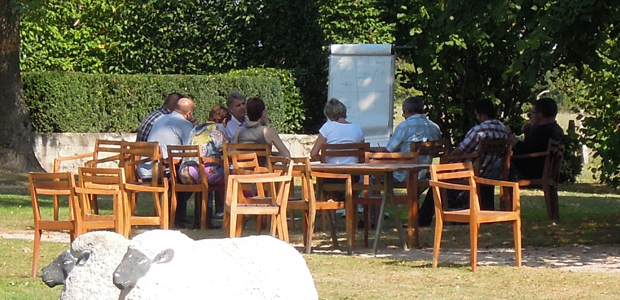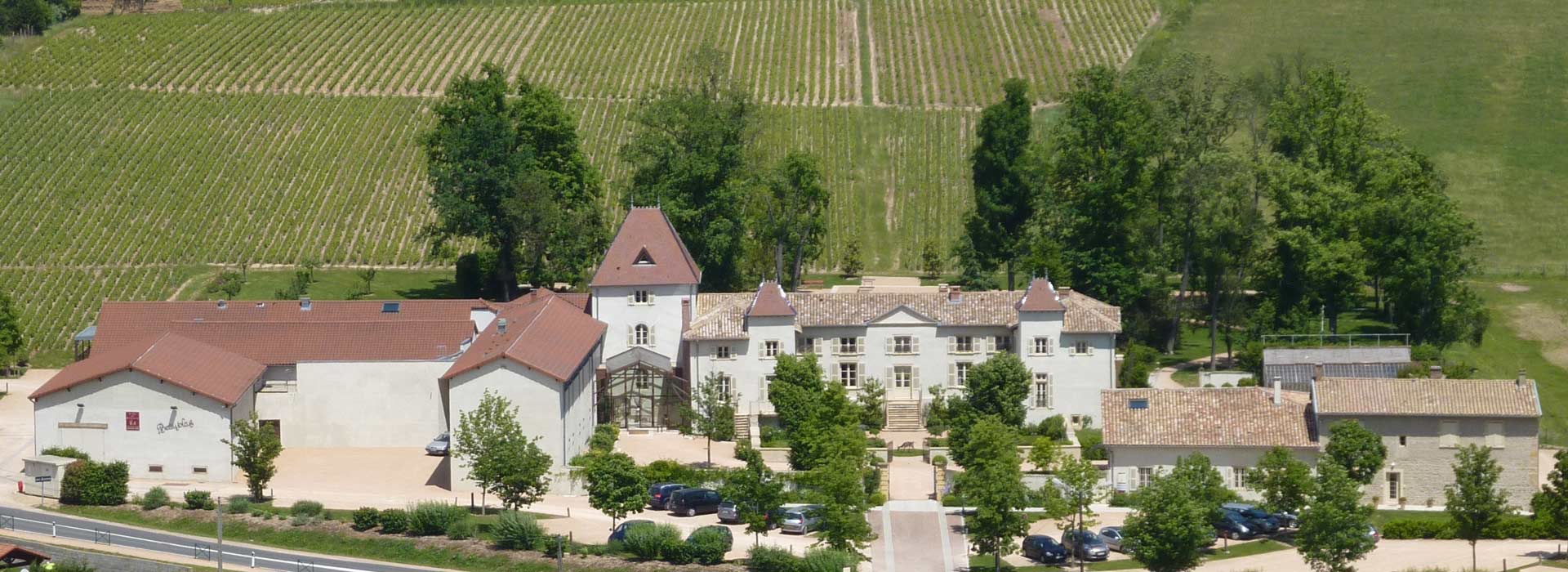‘Tradition and Modernity’

The First Garden
It was in 1726, when the Château was passed on in the estate of the parish priest of La Chapelle-de-Guinchay, that a garden and fruit trees were first mentioned.
Digging Deep for a Fountain
In 1866-67, attempts were made to get water gushing from an artesian well. Unfortunately, after a 175-metre well was dug, the project was abandoned due to lack of water! And it wasn’t until 1710 that the fountain on the estate was mentioned.
The Origins of the Grounds of Today
In 1889, the grounds were transformed with ‘huge French-style parterres’ and ‘12 to 14 thousand plants of various species’.
Source: La Chapelle-de-Guinchay et ses hameaux by F. Perraud, published by LAFFITTE – 1910.

Between 2003 and 2006, during the restoration of the Château, the whole of the parkland and gardens was reshaped, as it had disappeared under dense woods!
The orchard was recreated using traditional varieties of fruit trees including peach, cherry, apple, quince and apricot trees.
The lime tree walk had to be completely replanted.
The box trees uncovered amid all the overgrown vegetation were ‘transformed into cloud trees’.
The rose garden in the north was recreated and extended across the whole park, up to the edge of the vines. More than fifty species are growing there, with very aromatic and heritage varieties prioritised.
Opposite the orangery, the kitchen garden has regained its place beside the old kitchens. It is partly reserved for the chef’s kitchens and partly for cut flowers in mixed borders to brighten up the Château’s bouquets.

Various parts of the gardens have been redesigned for your corporate events!
The outdoor seating area opposite the fountain, where you can eat in the fresh air.
Alcoves of greenery where you can continue your meetings in the quiet under the trees.
The orchard seating area for an even bigger change of scenery.
The lime tree walk and the meadow by the vines are used for activities.
